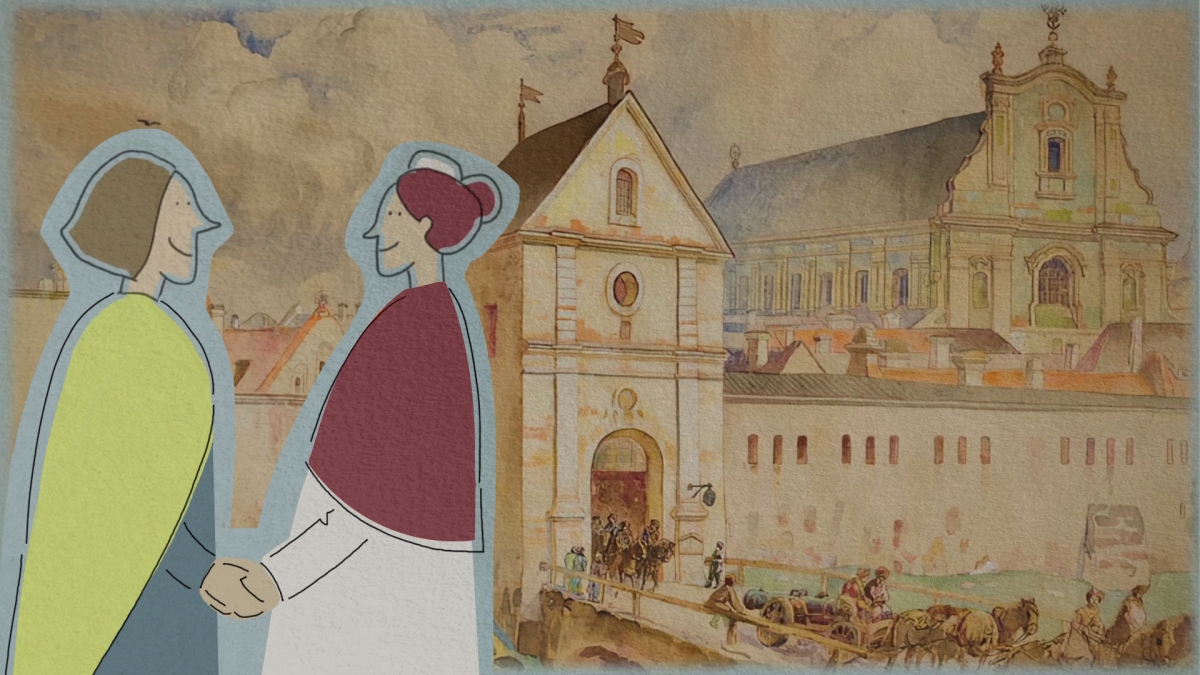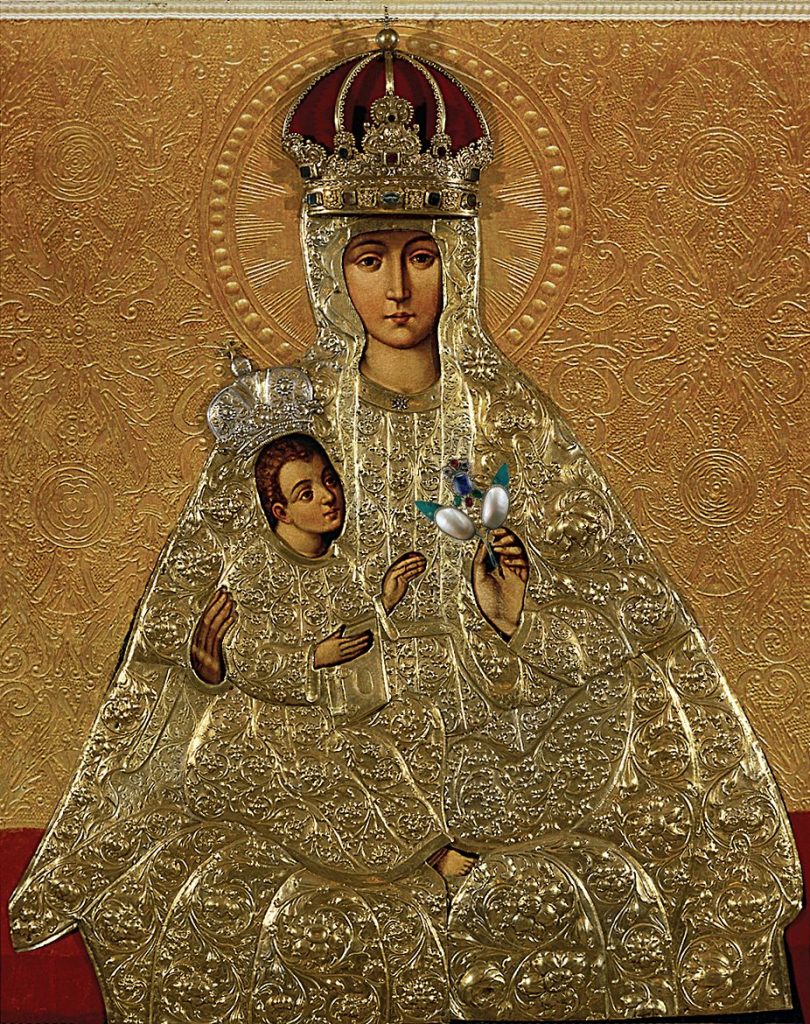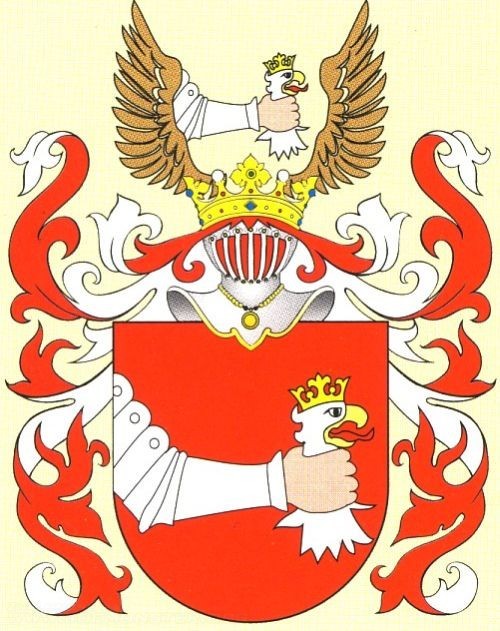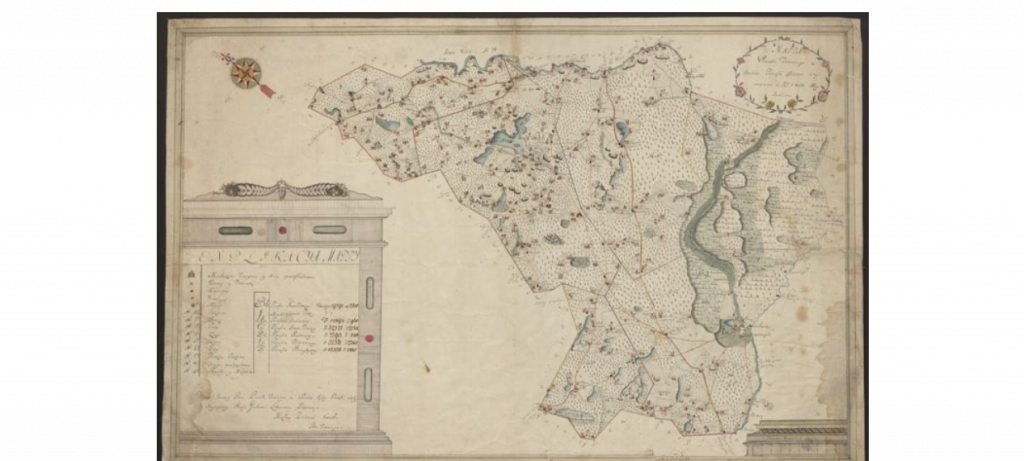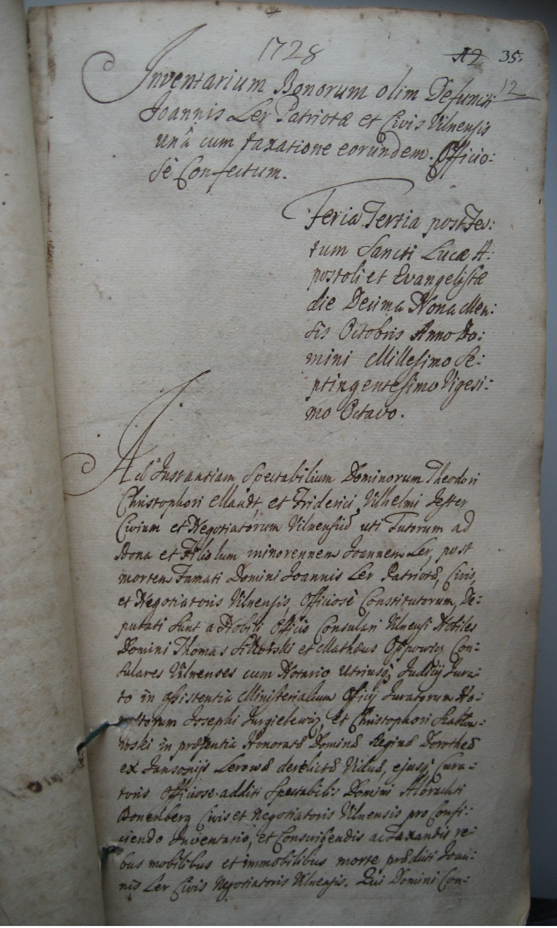Hostage Drama in a Tavern near Vilnius
In all likelihood, 22 February 1709, was a nice winter day. Otherwise a company of Germans, residents of Vilnius and their guests from Königsberg travelling with their wives and daughters, wouldn’t have chosen it for a sledge trip to Trakai. One of their goals was to visit the miraculous image of the Blessed Virgin, the painting that still hangs inside the St Virgin Mary Church in Trakai. Lutherans, unlike Reformed Evangelicals, revere Mary as a virgin mother of Jesus. In this respect they are similar to Catholics.
However, the matters of faith did not play much role in what happened on the way back, when the Germans stopped at a tavern in Vokė. None can tell the exact location of the fated tavern, for then several villages stood on the banks of Vokė and bore similar names, whereas Trakai was reachable in various routes.
Thriller in the tavern
It was Ona Lehr, a young lady from the wealthy family of Vilnius merchants, who proved to become the major problem. Betrothed to Samuel de Strunk, the captain of the foreign branch of the royal army, who unambiguously claimed he sought her “eternal friendship”, as marriage was occasionally called back in those days. She stirred his jealousy by simply joining the outing bunch on a tour to Trakai. De Strunk was furious. He took several dozens of men from his squadron, all on horseback and bearing firearms, and set off for Vokė.
The German party was already inside the tavern when de Strunk and his friends rushed in and surrounded them.
“
Captain de Strunk had no idea who exactly was his rival and directed his wrath at Christoph Henrik Daurer, a merchant from Königsberg. The merchant endured an incessant current of insults: “How dare you talk, sit, and travel beside miss Lehr, my betrothed?”
Captain de Strunk had no idea who exactly was his rival and directed his wrath at Christoph Henrik Daurer, a merchant from Königsberg. The merchant endured an incessant current of insults: “How dare you talk, sit, and travel beside miss Lehr, my betrothed?”
Mister Dauer said he was a free merchant and a subject of Royal Prussia, and a happily married one at that, therefore he had no reason to court a girl from Lithuania. Infuriated de Strunk met his words with a hit to his face and ordered his friends to take aim at the merchants. As one of the authors of the complaint attests, one soldier would have killed someone if they did not push him over. Eventually de Strunk ordered the soldiers to bring axes and the merchants to lay on the ground.
The male hostages fell down on the floor, while the women escaped to an empty room. De Strunk followed his fiancée and “made her confess and publicly vow the eternal friendship to him; otherwise he threatened to take the Königsberg merchants, all tied up like rams, to his regiment.” To make it look even more momentous, he added: “If and when you marry that merchant, I will kill him in his house.”
The Germans later told the court of law that “lady Lehr, scared to death, was forced to vow her friendship publicly; she also took a ring off her finger and gave it to mister de Strunk so that he left the Königsberg merchants in peace.” Which de Strunk did by letting them go.
Vilnan girls in the kidnappers’ crosshairs
Archival documents only represent the position of the plaintiffs rendering their objectivity uncertain. Some details might have been exaggerated but overall the story looks plausible and, in a way, reflects the realities of the day.
Do You Know?
Beyond reasonable doubt, kidnapping of young women had become a real problem in the 17th century in Vilnius. It is no coincidence then that King Sigismund Vasa issued a privilege in 1627 that made it strictly illegal to persuade, kidnap, and secretly marry girls from Vilnius if men were interested “only in the property of the bride”. Any girl marrying a man without the permission of her parents risked losing all her wealth and inheritance rights. The royal document was specifically aimed at Vilnius.
It has to be said, though, that lower-class but well-to-do girls rarely objected to being kidnapped by noblemen, as such marriage could ultimately introduce them and their children to the nobility.
Miss Lehr and mister de Strunk
“
He also owned 35 paintings, three mirrors, several cupboards, a number of closets, tables, and carpets as well as nearly 30 books, all attributes of an elite Vilnan family.
Ona Lehr was a daughter of wine, haberdashery, and spice merchant Joachim Lehr. He had passed away by the day the hostage drama took place, making Ona and her brother inheritors of a fortune amounting to no less than 31,000 złotys in goods and cash.
His father’s post-mortem inventory lists gold and silver jewellery, silver spoons and porcelain among other valuables. He also owned 35 paintings, three mirrors, several cupboards, a number of closets, tables, and carpets as well as nearly 30 books, all attributes of an elite Vilnan family.
Samuel de Strunk was a son of royal secretary Christoph de Strunk. His family had a coat of arms and ranked among elite Vilnius residents, at least in financial terms. In the early 18th century many de Strunk males served in the army and owned plots of lands in different parts of Lithuania.
Although Miss Ona vowed to marry Samuel, he eventually tied a knot with one Katarzyna, a girl from the family of provincial nobles. They had two children, but de Strunk was killed soon after the birth of the second child. His father later claimed the murder had been planned by the “ungrateful” Katarzyna.
Not much is known about miss Ona’s life. Shortly after the incident in Vokė, plague hit Vilnius, making it likely that Ona fled the city, possibly to Königsberg, where she could indeed have married a local merchant.
By Aivas Ragauskas
